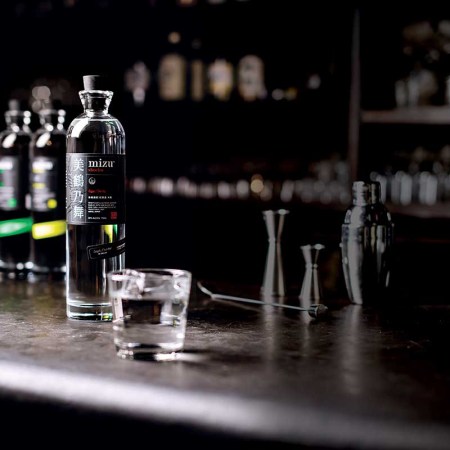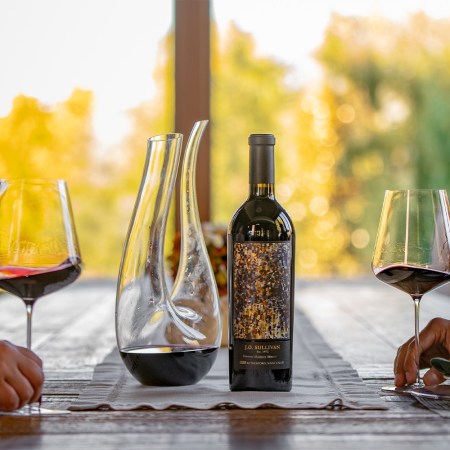“You wouldn’t believe the burn rate on this.”
Steven Soderbergh is discussing his startup. And booze.
His booze: Singani 63.
The director’s nascent entry into the spirits world, Singani is a journey almost nine years in the making (not counting the liquor’s 500-year existence pre-Soderbergh).
Distilled from the white muscat of Alexandria grapes at high elevations in Bolivia, Singani 63 marks Soderbergh’s deep dive into a world he admittedly knew nothing about.
But hey, nothing new there. Always a decidedly eclectic director — he helped jumpstart the late 20th-century indie film movement with the Palme d’Or Award-winning Sex, Lies and Videotape and later won an Oscar for Traffic — Soderbergh has always worked on projects big and small, ranging from crowd-pleasers to four-hour meditations on Marxist revolutionaries.
He’s seen success. He’s seen failure. He’s experimented with form, medium and style. Turns out that experience meshes well with the booze world.
Over a three-plus-hour bar crawl through Brooklyn, the director discussed everything from his early drinking days in Louisiana to ratings battles with the MPAA, tossing in a few playful name drops along the way (“I saw George [Clooney] last week; he was talking about [his tequila brand] Casamigos”).
But mostly, we discussed Singani.
“I discovered it during a movie shoot back in 2007,” says the director. “The Americans on the crew asked me, ‘Why not try bringing to the U.S.?’ I thought, naively, people bring spirits to the market all the time! It must be simple.”
Not so. And yet: “I’m planning for success. Like Stalin, I’ve got a five-year plan.”
Or, as is the current case, nine years.
That plan is detailed below, in 10 steps. Bottoms up.
Be patient. Especially when dealing with the government.
“We started the import process way back in 2008. It arrived here in 2014. Singani’s been initially classified as a brandy, not as its own category. We’re in the midst of petitioning the TTB [Alcohol and Tobacco Tax and Trade Bureau] to get our own patent. I remember when we made our initial case, we were dealing with four different agencies and like 17 different people in one room.”
Be inspired by those around you
“My Bolivian casting director gave it to me as a gift, and told me it was the national drink of Bolivia. I’m usually a vodka drinker — wine and beer doesn’t get me to the end zone — but I immediately noticed the bouquet. It was quite floral. And it made me buzz-y, but not drunk. I was totally fine the next day. My near-term thought was, ‘Can you get me enough for the next five and a half months to get me through the shoot?’”
Get your product in the right hands
“Cocktail culture has shifted in the last few years. It’s been so beneficial to us. The receptivity is there! Mixologists have told us about the versatility of the drink. They can do a lot with it — they can replace rum, tequila and vodka with it. In some cases, they can match classics, and make them better. It’s great for a Mule or a Negroni.”
Don’t turn down press opportunities
“We did this episode of Billions where a guy is holding a bottle of liquor and shooting up a bunch of stuff with an assault rifle. No brand wanted to be near the scene. They called me up and said, ‘Can you send over six bottles?’ I’m like, ‘Yeah!’ It’s pretty prominent in the scene.”
Tell an interesting story
“I had 250 cases land in New Jersey, and I asked my accountant, ‘Now what?’ He said I needed a brand management company. We hired a company, and that initial meeting was REALLY distressing. That was a gut check moment. I thought, ‘I could get out now, I could just drink this on my own.’ But they were like, ‘You’ve got a good narrative, and a product no one’s heard of with a 500-year legacy. That’s a story, along with your story of how you got it here and why you like it. Also, it’s good.’”
Understand how competitive the landscape is
“The difference between this and my day job is, if I can’t get a movie into a festival or find a distributor, I can still post it online. Here, if you don’t get on the back bar, you’re done. It’s a zero sum game.”
Show up
“When we were filming Behind the Candelabra, I picked Dan Aykroyd’s brain about [his vodka] Crystal Head. He said, ‘If you’re not going to show up, don’t do it.’ You gotta go to general sales meetings, you have to go to bars, you have to go out with writers.”
Sometimes, you gotta lose money to make money
“To be self-sustaining is my goal. This takes up time and resources. It’s not a joke; it’s a serious business. I’m very aware of the Sunk Cost Fallacy. I’m making sure we’re not doing this here. But I’m also treating this like a small movie that I want to become a big movie. I’d like this to be Magic Mike, not Solaris.”
Learn from your day job
“I take the same approach to Singani as my filmmaking career. If I make something I like, I think other people will like it. That’s my only compass.”
Plan for success
“What’s your plan to get to 10,000 cases? 100,000? If you can’t scale it, you’re just one of those people who are hawkin’ your shit in your garage. You’ve got to be thinking, “If it’s this good, can I do 100,000 cases?” There is an analogy in film: we’re platforming; we open in theaters to run a certain kind of movie, and you build that. But if you shoot too high, you’re dead. Every week, we’re analyzing how fast and how far to grow.”
And finally, our favorite Singani recipe from the night…
Bolivian Breakfast
Grand Ferry Tavern, Brooklyn
.25 fresh lemon
.25 oz Byrrh
.5 oz coffee syrup
.5 oz fresh OJ
1.5 oz Singani
Shake and strain over ice in a Collins glass. Top with Q ginger beer.
This article was featured in the InsideHook newsletter. Sign up now.





















